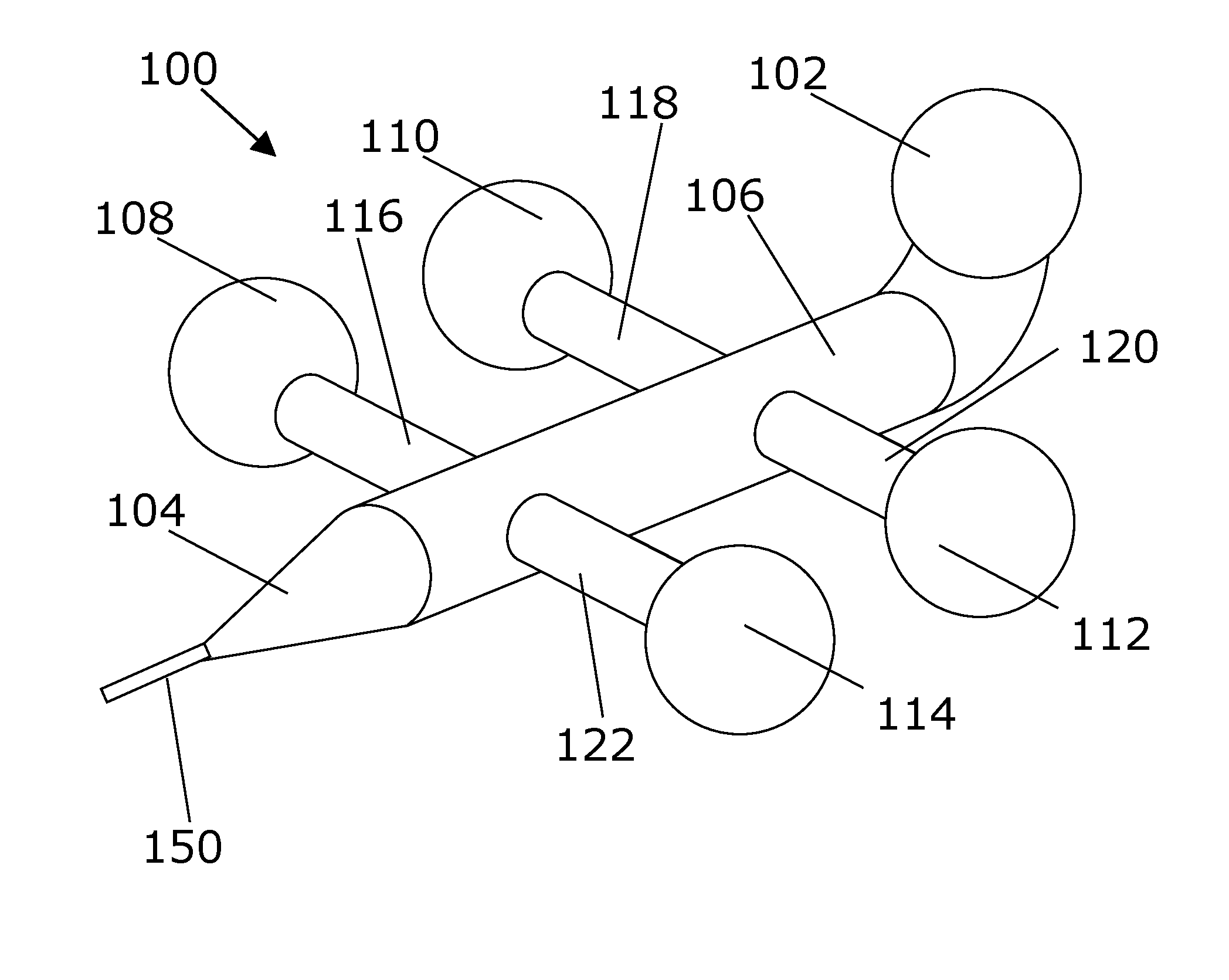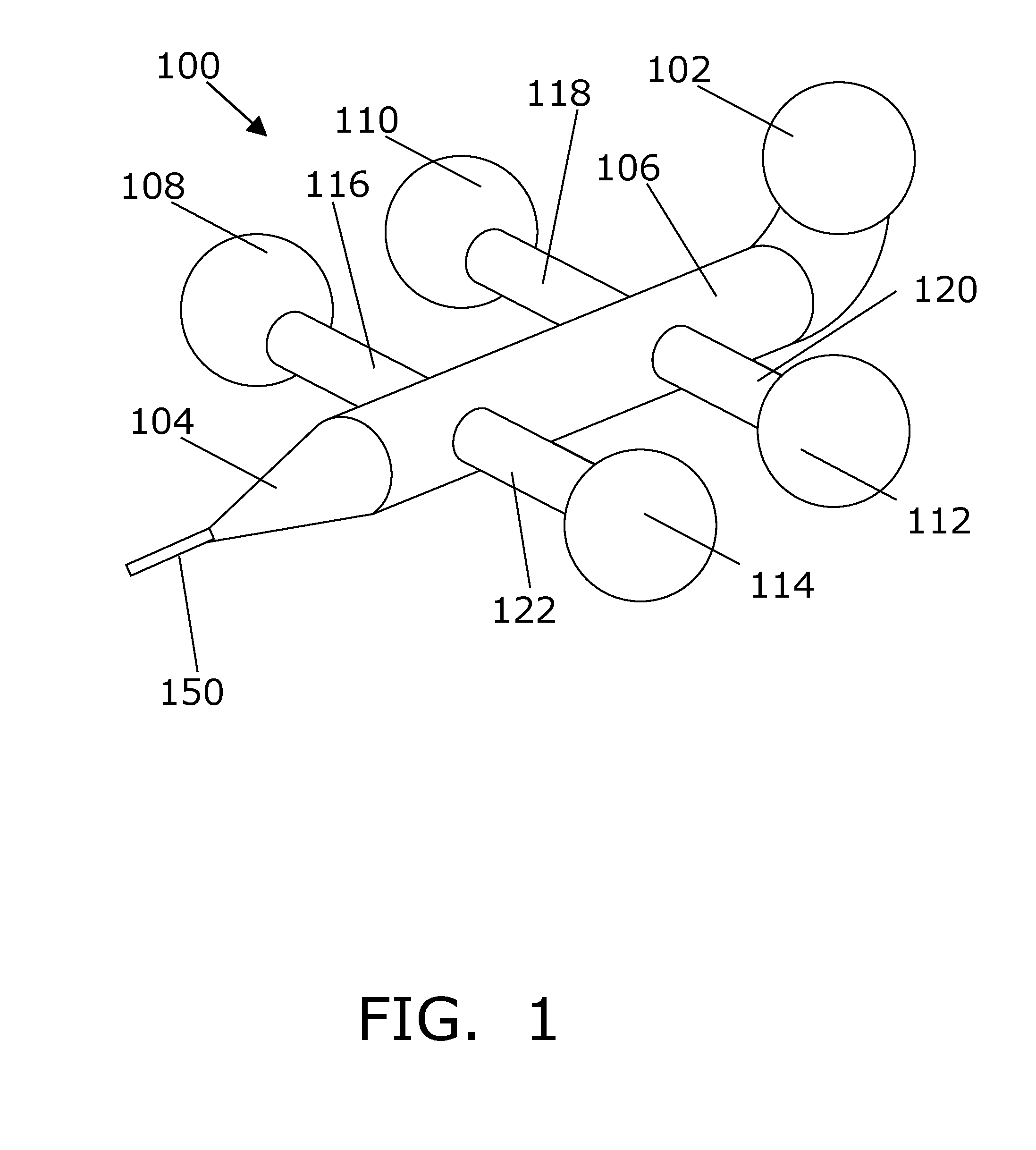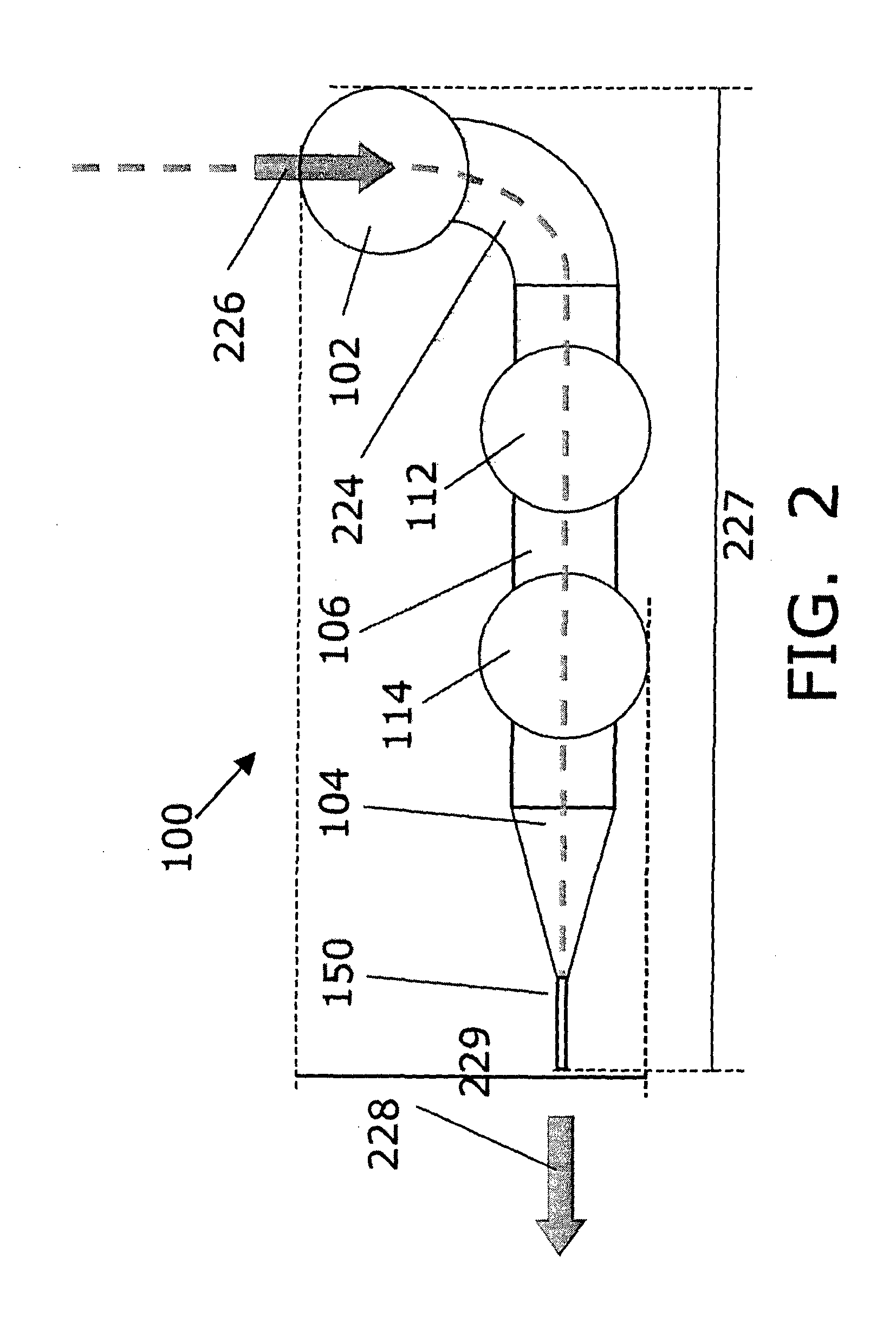Optically guided microdevice comprising a nanowire
a nanowire and optical guide technology, applied in nanotechnology, scanning probe microscopy, instruments, etc., can solve the problems of being able to radiate light to and from the nanowire, and achieve the effect of improving inspection of objects, facilitating the use, and facilitating a new area of micro or nano-endoscopic applications rendering
- Summary
- Abstract
- Description
- Claims
- Application Information
AI Technical Summary
Benefits of technology
Problems solved by technology
Method used
Image
Examples
Embodiment Construction
[0093]In the following section, light is used interchangeably with EMR. It is understood that light may be used in particular embodiments, but that the exemplary use of light in those embodiments do not constrain the invention to use of light only. FIG. 1 shows a perspective view of a microdevice 100 according to an embodiment of the invention, the microdevice 100 features a light in-coupling element 102, a light out-coupling element 104, and nanowire 150 being arranged for receiving electromagnetic radiation emitted from the first electromagnetic radiation emitting unit 102 and emitting electromagnetic radiation through the microdevice body towards the nanowire 150. The relative size of the nanowire with respect to the microdevice is not to scale. The light in-coupling element 102 is arranged to receive light and guide the received light into a light guiding element 106 which optically connects the light in-coupling element with the light out-coupling element. Thus, light may be re...
PUM
 Login to View More
Login to View More Abstract
Description
Claims
Application Information
 Login to View More
Login to View More - R&D
- Intellectual Property
- Life Sciences
- Materials
- Tech Scout
- Unparalleled Data Quality
- Higher Quality Content
- 60% Fewer Hallucinations
Browse by: Latest US Patents, China's latest patents, Technical Efficacy Thesaurus, Application Domain, Technology Topic, Popular Technical Reports.
© 2025 PatSnap. All rights reserved.Legal|Privacy policy|Modern Slavery Act Transparency Statement|Sitemap|About US| Contact US: help@patsnap.com



